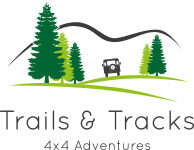Green Road Driving.
We follow the Greenlane Association (GLASS) & Tread Lightly code of conduct for green road driving.
We prefer to use the term Green Road over the more common Green Lane as we believe this can be misleading after all there is no confusion over what a ‘road’ is and isn’t.
Green Roads are unsurfaced roads they are not covered in concrete or tarmac; many will have existed for centuries and were once possibly old trader, mining, quarry or access roads. They will be classified for driving as either a Byway Open to All Traffic (BOAT) or Unclassified Road (UCR). As roads your vehicle will need to have Road TAX, Insurance and an MOT if appropriate for the vehicle age. The driver will need to hold a driving licence for the class of vehicle in their ownership. As the trails and tracks we use meet the classification of a road we are not ‘off roading’ we are driving public rights of way with vehicular rights.
Unfortunately Green Road driving is a contentious issue and individuals and groups consider that vehicles should be banned from BOATs or UCRs. That is why here at Trails & Tracks we believe everyone has the equal opportunity and right to use a byway open to all traffic or unclassified road; and to co-exist with other users we follow a code of conduct.
Travel with minimum impact
Keep to the defined track. Detour only to pass immovable obstructions.
Be critical of your own driving ability and equipment when assessing an obstruction; it is your right to abate a non-lawful obstruction, but do not commit yourself to a bigger task than you are equipped for.
Use a winch only with extreme caution and if circumstances demand it. Ensure you use only the correct equipment and techniques.
Avoid mud. Where the surface may easily be damaged, be very gentle on the throttle to avoid wheel spin.
Never drive on moors and marshland.
Practice minimum impact driving at all times.
Respect the environment and the rights of others
Practice driving as quietly as you can.
Be considerate of other users at all times.
If your right to travel is challenged, discuss; if not resolved, leave as requested until status is rechecked.
Travel at a quiet and unobtrusive pace and as slowly as practicable; we recommend a maximum speed of 12mph when driving on an unsealed Right of Way.
Avoid damage to trees, hedgerows and boundaries. Some roads carry vehicular rights but may be too narrow for your vehicle.
Be courteous to other road users – pull over and stop your vehicle for walkers, cyclists and horse riders, switch off your engine for the latter.
Thank people that move over to let you pass.
Watch out for injured or trapped animals, and report all suspicious events to the landowner.
Educate yourself, plan and prepare before you go
Ensure you have up to date maps.
Before setting out to remote areas check the weather forecast and let someone else know where you are going and when you are likely to return.
Ensure you have adequate fuel for the journey and check all levels before settling out.
Never enter private property without permission of the land owner.
If in any doubt walk a route prior to driving it, to determine its ability to sustain traffic, if in any doubt turn back.
Ensure your vehicle is maintained to a high order and up to the task.
Maintain a reasonable distance between vehicles.
Wildlife faces many threats and many byways are valuable habitats, take care at all times and be particularly watchful in spring and summer.
Study the Country Code and follow it at all times.
Always leave the countryside at least as good as you found it
Do not travel on any byway when they risk being affected beyond a point of natural recovery once the weather improves.
Do not use any byway that may be damaged by the wheel pressure applied by your vehicle.
Gates that are secured open should be left so, all gates that are found closed or swinging open should be closed behind you.
Travel within existing wheel tracks, never create new ones. Where several wheel tracks exist search out the original route.
Take your litter home with you.
Carry a bin bag and collect any litter you may see along the way.
Do not scare livestock or wildlife.
Do all you can to avoid polluting any waterways.
Discover the countryside responsibly
Use only rights of way with known, proven or provable vehicular rights.
Report any obstructions to a byway to the highways authority and to Tread Lightly.
If the route is not obvious on the ground, ask locally, or check on the maps held at the highways authority offices, or consult with Tread Lightly representatives.
Ensure your vehicle is fully road legal. Rights of Way are subject to the same laws as normal sealed roads.
Do not practice recovery techniques on any public Right of Way.
Keep children and dogs under supervision.
Guard against all risks of fire.
Clean down front and rear vehicle lights and number plate before returning to the highway.
Respect the environment and all other users. Common sense and common courtesy will ensure a future for our lanes.
